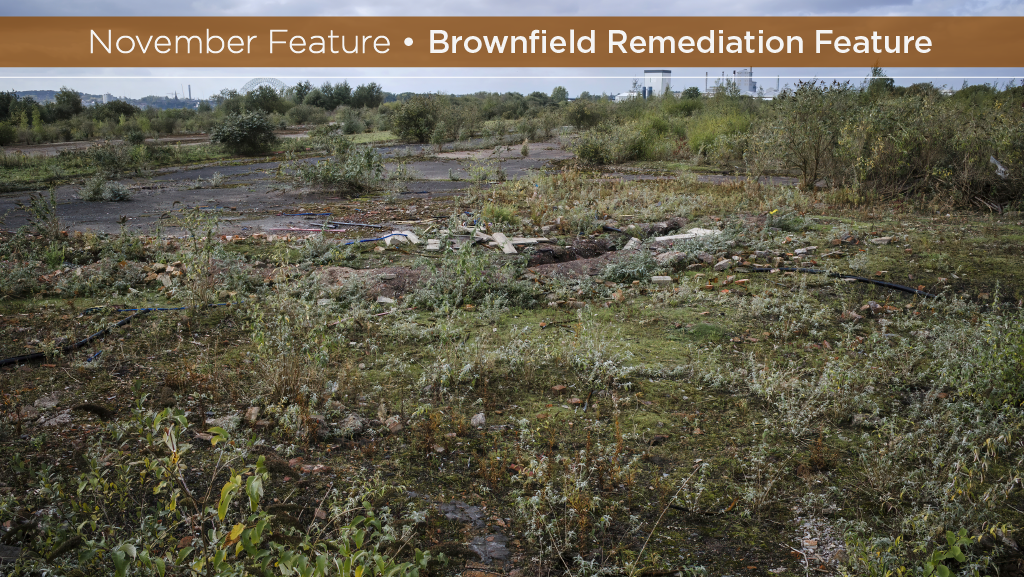To steal a line from Mark Twain, everyone talks about brownfield development, but few really want to do anything about it.
And that’s puzzling because there’s no secret to fast-tracking brownfield reclamation and development: it just takes money. Lots of it.
The big question, though, is where does that money come from?
The municipalities are pretty much on their own when it comes to incentives, financial or otherwise.
There’s a Green Fund administered by the Federation of Canadian Municipalities (FCM) which distributed $1.6 billion in federal funding and other projects but when it comes to brownfields there’s barely a trickle of cash.
Since 2018 in Ontario, home of 40 per cent of Canada’s brownfields, FCM has funded only four brownfield projects at the site planning stage, granting $389,300 out of $1.78 million in total costs. None of those projects seem to have advanced to remediation.
Subsequently, it appears the FCM has handed administration of brownfields to the Canadian Brownfield Network (CBN), which is a non-profit without external funding and limited in its ability to support the municipalities.
While CBN hopes to ramp up, it’s a volunteer organization and can’t provide municipalities with the funding they need on its own.
As such, stakeholders agree: the private sector can’t carry the cost by itself except in a few choice locations where the approved density and market demand will counterbalance remediation expenses and the extra time required to get to completion.
And that’s where the fight starts, but it’s more than just money. As it stands there’s not even a decent inventory of where brownfields lie, their level of contamination or their potential for rezoning.
Out of the gate brownfield developments are much like any other development, even if the goal is purpose-built rental apartment or affordable housing, says Residential Construction Council of Ontario president Richard Lyall, focusing into what has been a key message from his members for a decade.
It’s the upfront cost of development, he says, pointing to the 32 per cent or so per unit cost eaten up by red tape, permits and fees. Then there’s the time, the 10 years it can take to get a project completed in Toronto.
Having the HST removed from purpose-built rentals is something that could also benefit brownfields, says Lyall.
In the city of Toronto, he says, a quick drive around Scarborough reveals dozens of derelict former industrial and commercial sites that could be fast-tracked and incentivized.
And it’s clearly needed with the federal government still planning to bring in 1.5 million more immigrants while at the same time recognizing the housing isn’t there to support them.
Still, Ontario, and by extension, Canada, is far behind the innovations in other jurisdictions.
Andy Manahan, a long-time leader in the construction sector, and former executive director of the Residential Civil Construction Alliance of Ontario, presented research and best practices from counterparts in the U.K. in 2013.
“It’s called Contaminated Land Application in Real Environments, but everyone just knows it as CL:AIRE,” says Manahan, now consulting independently and a senior fellow at Global Public Affairs.
“They work as a hub model to use contaminated sites for clean soils so you find a home for the soil temporarily while waiting for it to be used properly.”
It was enormously successful when excavating the new subway line because the type of London clay extract is considered premium.
Part of the ongoing problems with brownfields is the soil itself, which is subject to a myriad of regulations, he says, and discussions continue as to how to streamline them for brownfield remediation.
“There’s a lot of good solutions but clearly the private sector can’t do it on its own, so there needs to be a nudge,” he says.
Britain also has a detailed inventory of brownfields with their location, size and type of contamination, says Christopher De Sousa, a professor in the school of urban and regional planning at Toronto Metropolitan University, which gives much more oversight.










Recent Comments